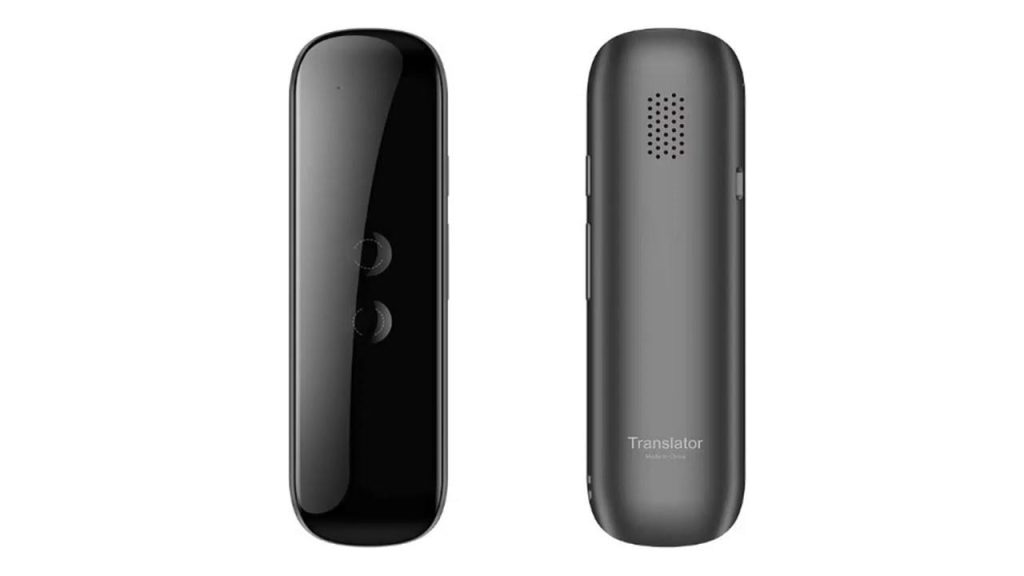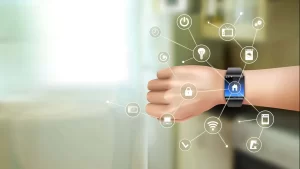Revolutionizing Communication: The Future of Instant Language Translation Devices

What will happen in the era of globalisation where languages need to speak to each other with ease? This is jumpstart question in Era of Globalisation.
For travelers, professionals or anyone visiting an other places sometimes it is really long conversation by using the dictionary to break up linguistic communication barrier.
With the latest technology , an revolutionary alternate has already available to overcome the language barrier . Its named Instant translation devices available then to get realized the work. These devices are designed to translate a set of speakers into languages which can be a bit hard for interpretation. In this open discussion , I will delineate the functionality,perks and future aspect of these device.
Understanding the Technology Behind Translator Devices
Nowadays, translator devices are becoming more prevalant in society, helping people communicating in various languages. The devices use sophisticated technology because the modern language converting process demands rapid interpretation and translation without detours. At the foundation, a translation device based on collaboration with human endavours, but now the advanced AI and algorithms are used to produce real-time results. Initially, they can be used in a form of multistep translation, if it is not immediate. However, the modern language translator device needs to be adjusted to accommodate instant speech or text. In general, modern language converters are dependent on either speech recognition software or natural language processing (NLP) and a machine learning system. Most speech-to-speech devices use a combination of speech recognition, NLP, and machine learning for converting a spoken word from one language into another word of the original human speaker.
A major factor as to how good or bad such a translator device will be depends on how good the language processing will be. For example, has its speech recognition capabilities become very good? Say for example there are different accents, or dialects, or strange speaking patterns. When your device has picked up the speech, then it would be up to NLP to understand the context and meaning of the words sent to it. The translation will not be literal for the sake of a literal translation. If translation was not appropriate to the context it would be meaningless. Another important factor is machine learning. This is a form of AI where organizations couple together a lot of computers to perform a specific computation over very large training sets of data with the aim of improving or ‘learning’ overall. Let us say your device has successfully picked up the speech and then understood the context it is in. The device learns from every interaction it has in order to improve and add more words and phrases to its database.
Key Features of the Best Translator Devices
If you’re looking for the perfect translator device, there are a few characteristics to look out for in order to be absolutely sure that it’s a great device to use. The first of these features is how many languages it can translate. If it can translate many varieties of languages, it becomes a highly flexible device, especially for travellers and professionals looking to do business with individuals from various linguistic backgrounds. For this reason you would choose a device that supports translation in more than 100 languages.
They also include the device’s speed and accuracy. Some of the best translation devices can deliver near-instant translations and a high degree of accuracy. This is especially important when time is critical, such as when in business negotiations or dealing with emergency situations. Another factor seen important by those we surveyed is easy-to-use interfaces and intuitive controls. This includes stuff like it is easy to tap the microphone device to change it to voice input, or the easiest way to switch between spoken languages and the written ones, to make adjustments to the device’s settings, and so forth. The best devices are not like old clunky translators – they are intuitive to use so you can forget about complex technical manuals and the like. Battery duration is another consideration, especially for those travelling abroad where the device will need to hold up for a full day without having to be charged in between.
The Benefits of Using a Language Generator
Broadly, there are many benefits of language generators or translator devices that I see this as an essential tool for modern comuination.
To believe so, the first is that suport human to communicate unambiguously with each-other, when people communicates to each-other and do not have same language is impossible for suport each-other and they cannot understand.
Is example that if in international congress there are from different countries participated, participants will discuss about different topics, they have to use this device when present in the congress.
Second, when participants can present there discussion in their native language, each participant can follow the discusion, without the use of translator device, the conference will not always follow and participants can misunderstand it.
Other advantages mean that a language translator device has many different applications Other benefits mean this would not just be a handy travel aid, but could have daily value in a wider sense. Comparing it with human or alternative translation methods would be time-consuming, costly and not always reliable. A translation app would usually be cheaper than a human, but it works only if you have access to service locally and without any mobile coverage. This would make it unreliable in a travel context, but also a component mainly connected to a residence or a business building. A portable translation device, on the other hand, is versatile, small, and would take minimal care and attention. You could just keep it in your pocket or in a bag and could use it wherever you are. That way you could travel to a foreign country, arrive, and ask directions or order food not knowing a word of that language. It could also be a great learning tool. Improving your languages skills of any kind would surely be more effective if you could practise them with others in real time.
Potential Challenges and Limitations of Translation Devices
For all their advantages, translation devices are not without problems and limitations. For instance, translation accuracy will sometimes be problematic, especially in more complex or nuanced conversations. Of course, current versions of translation devices are exceptionally sophisticated, but even they can struggle with idiomatic turns of phrase, cultural references or jargon from certain industries. Take medicine, for example: the doctor you’re seeing to tell you you’ll be fine in hospital after your surgery and the robot that will provide you with your diagnoses in fluent, human-sounding speech are two very different things.
The other drawback of such devices is their inherent reliance on technology. Most translator devices require an internet connection to fully access the range of languages in the databases, as well as the most accurate possible word phrase translation through voice recognition technology. In places where connectivity is particularly poor, or in locations without an adequate service, the device will likely be hampered or become largely unusable. Furthermore, while many of these devices support a greater number of languages than we can possibly speak, there is also a question of the continual prevalence of some less-commonly used languages, limiting the usefulness of the device in certain regions. Another issue is that of privacy and data security, as a device will likely have to record some speech data in order to function properly, and may thus create issues in relation to how this data is then stored and used.
Future Trends in Language Translation Technology
Looking toward the future, innovations can be expected for language translation technology. Several promising trends will likely contribute to the continued development of translation devices that facilitate international communication like never before. One of the most anticipated trends will be the implementation of more advanced AI and machine learning processes into translation devices. New innovations in AI will continue to evolve machine capabilities, making translation devices more accurate and efficient with their translations, and also able to more easily represent the intricacies in complex conversations. Some might even develop devices that enable context-aware translation by taking the user’s specific needs and culture into consideration.
Another trend worth watching is the rise of wearable technology in language-translation. Between smart earbuds and glasses that translate in real-time into the wearer’s ear or into their field of vision, the need for hands-free approach in translation might not be necessary down the road. This approach has the potential to make even multilingual interactions even more seamless. Should 5G networks become more widespread in our future, the speed and reliability of devices can increase significantly for accurate translations, even away from major metropolitan areas. Even more customised approaches to translation might one day be a reality as devices can be personalised to learn the user’s speech patterns and preferences over time.
Choosing the Right Translation Device for Your Needs
Choosing the right device is contingent on a variety of factors: the needs of the user; the contexts in which the device will be utilised; one’s frequency of use; localisation of the target language; anticipated usefulness; and the like. For example, for those who frequently travel, the best device will be small, durable, capable of staying on for a long period of time without recharging, and functional offline. This is necessary because the device will have to be utilised in different countries such that it doesn’t need regular recharging or connectivity with the internet. For a business person, the best could be the one that has the highest degree of accuracy and works with as many languages as possible, especially those used in international business.
Another key feature is the device user-interface. About the same people group that are not tech-savvy, who uses a translator device cannot afford a complex and complicated one because it involves stress, and the device couldn’t be used on needed time. Also, cost of such device counts, depending on the device type used, some people settle with the expensive one, And some wouldn’t probably want to buy because is very costly, though in the long-run, the user would have benefited from the device as it comes with great features. Overall, what makes the best translator device is the ability, attaining the user-need without differentiating the cost and users easiness in using it.
Conclusion
In conclusion, the advent of instant translation devices marks a significant milestone in the evolution of global communication. These devices, powered by advanced AI and machine learning technologies, have made it possible to overcome language barriers and connect with people from different linguistic backgrounds effortlessly. As the technology continues to evolve, we can expect even more innovative and sophisticated translator devices to emerge, further enhancing our ability to communicate across cultures. Whether you’re a traveler, a business professional, or someone passionate about languages, investing in a language translator device can open up a world of possibilities, making it easier than ever to connect and collaborate with others, regardless of the language they speak.








